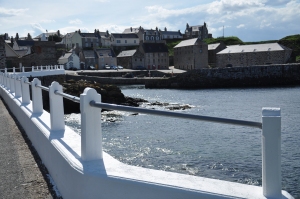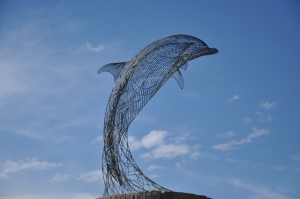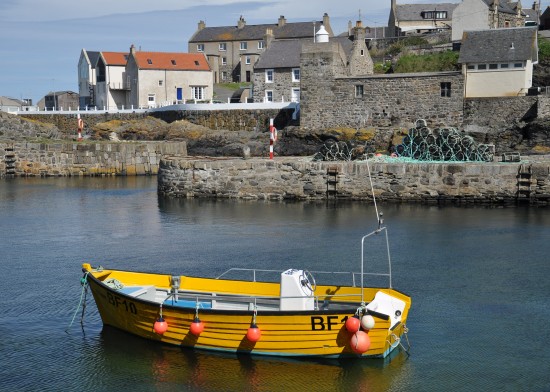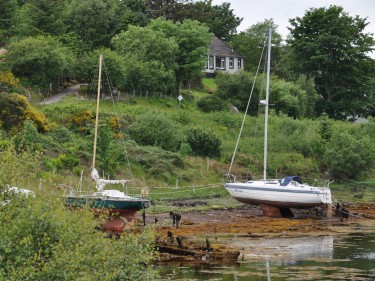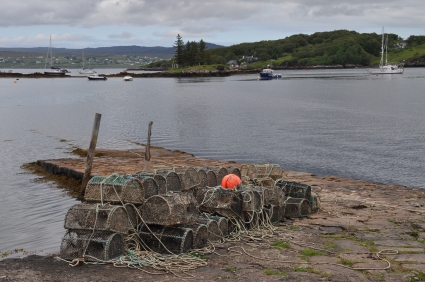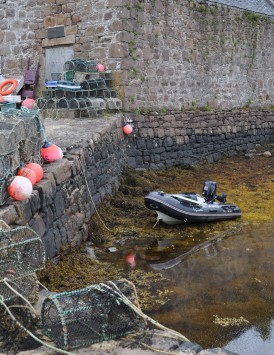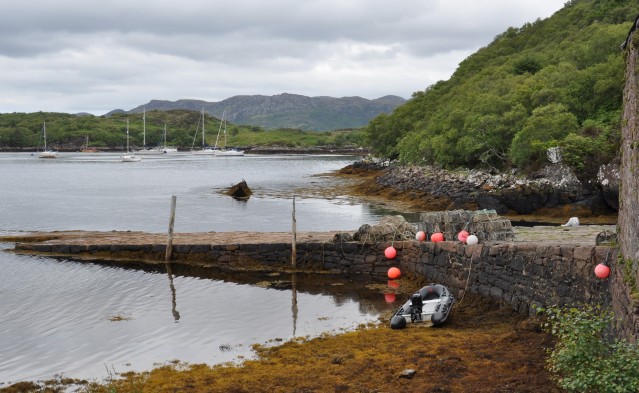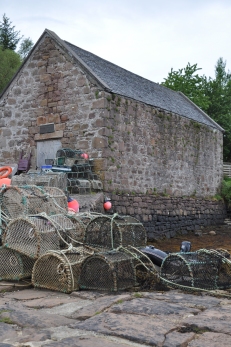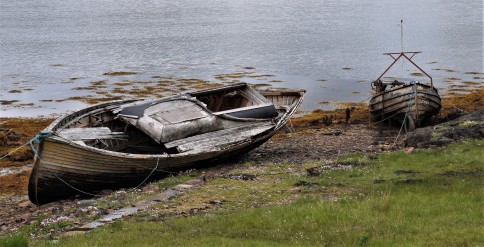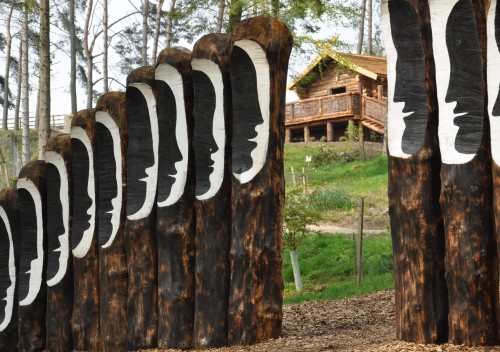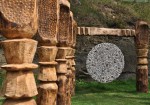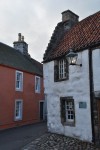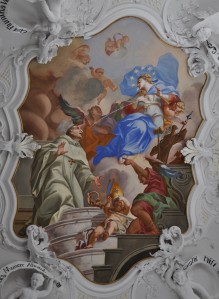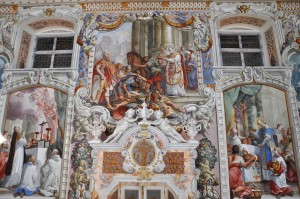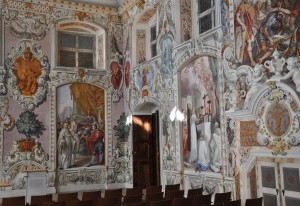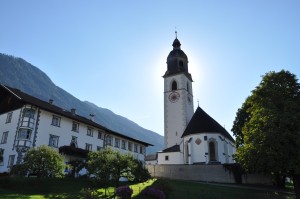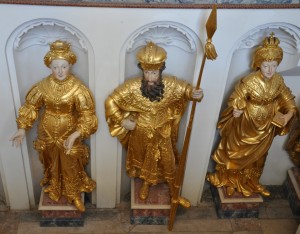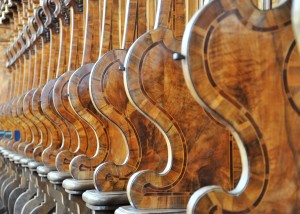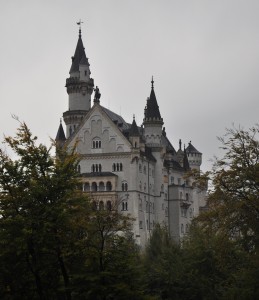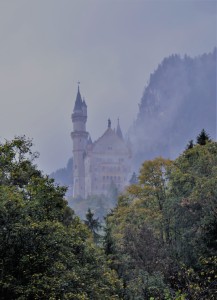Following on from the success of Golden Clippings in 2016 Thirsk Write Now has published Golden Clippings II, a further collection of stories by local writers.
Posted in Destinations, Pictures, Scotland | Tagged Aberdeenshire, fishing villages, Moray Firth coast, photographs, Portsoy | Leave a Comment »
A former fishing village in the north west Highlands of Scotland on the shores of Loch Gairloch.
Enjoy your visit!
Words and photographs Copyright © 2019 by Antony J Waller
Posted in Pictures, Scotland | Tagged Badachro, boats, fishing villages, Loch Gairloch, north west Scotland, photography | Leave a Comment »
 Almost hidden in a steep sided valley named on the outskirts of Grewelthorpe in North Yorkshire there is a horticultural delight where magnificent magnolias, azaleas and rhododendrons bloom against a backdrop of woodland, trees and by lakes. A veritable feast on the eye and, if this was not enough, at every twist and turn of the meandering paths works of art, statues, sculptures and buildings serve to enhance the experience.
Almost hidden in a steep sided valley named on the outskirts of Grewelthorpe in North Yorkshire there is a horticultural delight where magnificent magnolias, azaleas and rhododendrons bloom against a backdrop of woodland, trees and by lakes. A veritable feast on the eye and, if this was not enough, at every twist and turn of the meandering paths works of art, statues, sculptures and buildings serve to enhance the experience.
The Hutts, from the norse for ‘head of the valley’, is home to a collection of nearly 20,000 plants and 80 contemporary works of art. With some 1,400 varieties of rhododendron, 250 species of azalea and 150 different magnolias it is hardly surprising that it is considered to be the largest collection of these plants in the north of England. The park covers an area of 45 acres and is definitely a labour of love and a work in progress project for the owners who have been there since 1996.
The Himalayan Gardens and Sculpture Park is only open at certain times of the year so check before visiting: https://www.himalayangarden.com/
Here are some photographs from a recent visit:-
Words and photographs Copyright © 2019 by Antony J Waller
Posted in Pictures, Yorkshire | Tagged gardens, gardens in North Yorkshire, Himalayan Gardens and Sculpture Park, North Yorkshire, Sculptures, works of art in North Yorkshire | Leave a Comment »
Once a bustling port on the banks of the Firth of Forth and a busy centre for salt panning, mining and girdlemaking in the 17th and 18th centuries, Culross is now Scotland’s most complete example of an ‘ancient burgh’. However, it is not a museum; it is a community where people live and work. Old cobbled streets and alleyways such as Tanhouse Brae, Back and Low Causeway, Kirk Street, Slate Loan and Sand Haven lead you past the Mercat Cross, Culross Palace, Town House and many more 17th and 18th century cottages and houses.
Culross Palace – despite the name the ‘palace’ was not a royal residence but an early 17th century house built in for a wealthy merchant, Sir George Bruce, an industrialist and mining engineer who revolutionised the local mines.
The Town House – built in 1626 and where the town council met until the mid 1970s,
was previously used as a tollbooth, debtors’ prison,
and where once witches were imprisoned in the attic.

The Study – built in 1610 and so called after Bishop Leighton of Dunblane
who used the room as a study on his visits to Culross and the Abbey.
And finally; Culross has featured as a film set, an ‘extra’ in such films as Kidnapped, The 39 Steps, Captain America: The First Avenger and Outlander.
Words and photographs Copyright © 2018 by Antony J Waller
Posted in Pictures, Scotland | Tagged Culross, Culross Palace, Kingdom of Fife, Royal Burgh of Culross | 2 Comments »
How delightful – coffee, freshly baked scones and Doris Day too; and all on a sunny October day!
So next time you’re visiting Staithes…
Photograph Copyright © 2018 by Antony J Waller
Posted in Pictures, Yorkshire | Tagged Dotty's Vintage Tearoom Staithes, fresh baked scones, North Yorkshire coast, Staithes | Leave a Comment »
King Ludwig II of Bavaria was born in 1845, inherited the throne upon the death of his father Maximillian in 1864, engaged and almost married in 1867, declared ‘mad’ in June 1886 and found dead in the grounds of Castle Berg the very next day. He witnessed the growth of Prussia under Bismarck, war with France, the unification of Germany, lavished support on the composer Richard Wagner and drew up plans to build three castles, the romantic and ‘fairytale’ castle of Neuschwanstein being the most famous.
One of Germany’s top tourist attractions visited annually by over a million visitors Neuschwanstein Castle does not disappoint, even on a wet day when shrouded in cloud. Despite its romantic neo-gothic ‘fairytale’ exterior and lavishly decorated and art encrusted Wagnerian and Romanesque inspired interior, the castle was not completed and Ludwig’s visionary creation never fully realised.

Built from sandstone, red brick and limestone on the site of medieval fortifications, construction costs were met from the royal purse, albeit with additional loans taken out by Ludwig and later repaid by the family. Ludwig oversaw the building work and interior design, the detail coming from his love of the arts and effectively dedicated to the life and works of Richard Wagner.
Ludwig lived in the castle for 172 days, an increasingly embittered, withdrawn and shy figure, until his arrest at the castle in his bedchamber. Declared insane by the Bavarian government and a doctor who had never treated him and indeed met him only once some 12 years previously; the bodies of Ludwig and the doctor were discovered the following day at the water’s edge of Lake Starnberg after an evening stroll in the grounds of Berg Castle south of Munich. The official verdict is that Ludwig strangled the doctor before taking his own life, ‘suicide by drowning’. Unofficially it is ‘case not proven’ with many theories existing as to the actual demise of King Ludwig.
Words and photographs Copyright © 2018 by Antony J Waller
Posted in Destinations, Pictures | Tagged Bavarian Castles, King Ludwig, madness of King Ludwig, Neuschwanstein, Wagner | Leave a Comment »




